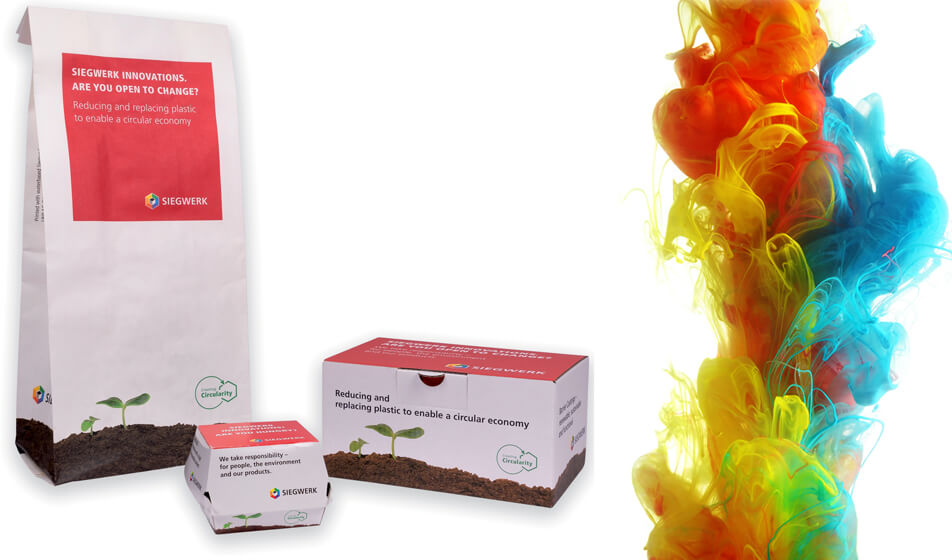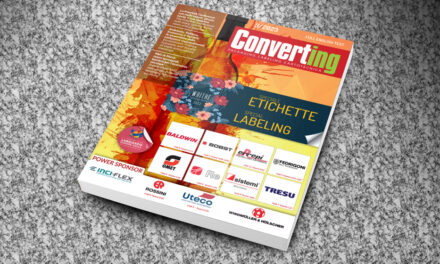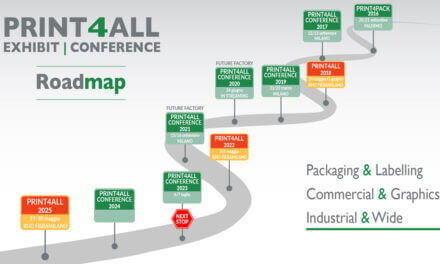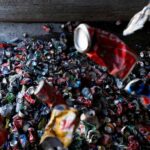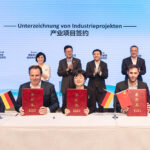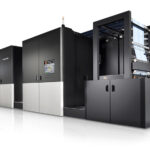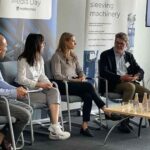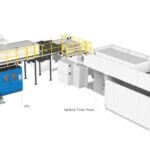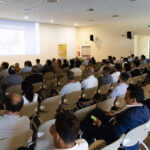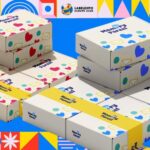Already adopted in several European countries, Siegwerk is now introducing them in Italy, building upon the positive reception from the first large converters and live demos at the La Sorgente newly acquired plant. The new water-based and vegetable-based flexo inks from the award-winning UniNature series are revolutionary, ecological and very performing.
At Siegwerk, ink goes green. The large global manufacturer is gradually replacing all its products with the new UniNature vegetable-based formulations, as announced by the clever payoff “RethINK solution”. The inks have already been awarded for innovation and eco-compatibility and appear in the Sustainability Reports of large converters as the flagship of their environmental friendly sourcing policies. They’re now beginning to be used even by medium-small converters, aware of how they give them the chance to offer brands a formidable atout, to be spent on an increasingly conscious and demanding consumer. Yes, because UniNature are vegetable-based inks.
Secret Ingredients and a Three-Step achievement
“When Siegwerk Research & Development experts convened the management to illustrate the formulas of the new UniNature inks, we looked at each other in amazement. We just did not expect that at the heart of such a disruptive innovation there could be such domestic and familiar ingredients, part of our daily lives”, says David Charquet, International Key Account Director Europe BI Paper & Board of the German multinational company. During his time in Poppi, managing the integration process at the newly acquired La Sorgente plant in Arezzo, Charquet also follows the introduction of the new inks (and not only) on the Italian market, and is quite passionate about it.
We will not obviously reveal the “secrets” of such a revolutionary product but I can say that its heart is the high percentage of vegetable raw materials: between 40 and 70% of the “dry” content (that is, without calculating, as others do, the share of water, which is “bio-renewable” by nature).
UniNature represents the third generation of a product born 7 years ago from the union of a vegetable monomer with an acrylic one: a hybrid resin called UniRICS, which later on evolved into UniXYL, recovering the lignin discarded from paper mills to reuse as a raw material in a virtuous and sustainable circular process. The dark color of the lignin, however, interferes with lighter shades, so R&D at Siegwerk continued to work until it produced UniNature: 70% vegetable, no application limitations, maximum qualitative and productive yield… practically perfect.
“We didn’t expect it either,” says Mattia Zambon, Customer Service Technician Support at Siegwerk Italia. “The researchers aimed at the sustainability of the new inks during laboratory tests, and only afterwards, in the beta phase, they verified that the new inks also offered better qualitative results than traditional formulas: perfect dot, better definition, excellent colour strength, great resistance, simple cleaning… In short, three birds with one stone: UniNature is more ecological, more circular and prints better. At the same price of other inks.”
Economic sustainability and a wide range of performance
For Siegwerk the issue of price is not marginal, and not only for the obvious reasons of comparison with competitors but also because, once they reach the industrial stage, UniNature inks are destined to progressively replace all previous products from the German company.
“Our range is very wide – Charquet recalls – and in continuous progression to serve the different application needs. Today we do the same with the UniNature line, as soon as a new formula dedicated to a particular substrate or printing process is ready, we offer it to our customer in substitution for the usual product. In this way our range will gradually completely “go green” and, according to our hope, so will the market. The premises underlying this project are clear: on the one hand, the new UniNature inks are equal to or better than the ones they aim to replace in terms of performance; on the other hand, the price remains unchanged. In addition, of course, to not requiring any intervention on the printing machine or in the workflow. ”
There’s a lot on the plate. The Italian packaging industry – they evaluate in Siegwerk – is one of the most important in Europe. “If we think – Charquet exemplifies – that in Europe DS Smith consumes 12 thousand tons of water-based inks/year for corrugated cardboard, of which 1,200 tons in Italy alone, we can imagine the amount that can be reached by adding the other large groups and all the medium and small independent converters”.
The peculiarity of the Italian industry, emphasizes the manager, is that it is fragmented into many small family-run companies, each with its own specialization and specific requirements, therefore representing the ideal outlet for a vast portfolio like ours. In addition, it is a market very attentive to both the quality and ethics of the product, in perfect harmony with the characteristics of the UniNature offer.
Supply Chain R&D and Functional Coatings
In Italy, water and solvent-based inks split the market almost equally, Siegwerk estimates, each family with their own elective applications.
Water-based UniNature inks for flexo printing are mostly used on cellulosic substrates: corrugated cardboard, industrial pouches and paper bags, paper wrapping, tissue and TNT, disposable plastic objects, Brick packaging for food liquids… traditionally receptive to the major issues of health and the environment.
Nevertheless, says our interviewee, even plastic film converters begin to express interest in this type of product: their clients ask for it and, in parallel, the technological evolution of printing machines is making it possible. “It is with the OEMs – emphasizes Zambon – as well as with the manufacturers of substrates, anilox, clichés and such, that we are able to conduct the indispensable tests to perfect our products, before asking the converter-partners to tests them on an industrial scale. In Italy we have many collaborations of this type, with two local clients in particular, with whom we are carrying out a project that is especially close to our hearts”.
But there’s more: the UniNature chapter does not end with inks. Siegwerk has extended its vegetable-based formulations to functional coatings as well, with the whole packaging world watching with growing interest, both for cellulosic substrates – essentially deprived of a series of barriers that the packaging must ensure – and for the new mono-material plastic laminates that have waived the barrier layers impossible to recycle and must reintegrate the protective functions in another way.
“It is precisely in Italy – says Charquet – that we have created the first polyethylene-free industrial pouch, implementing our new barrier coatings, in partnership with a client who has has been awarded for this application. And the next step will be an industrial pouch with a completely plastic-free valve. In the meantime, in Germany and outside Europe we have several customers who already use paper plates and cups with our vegetable coatings and, as soon as the last required certification is obtained, we’ll market the products over here as well.
“What’s Inside” an Ink: The Components That Matter
Printing ink consists essentially of three components – extender, colour base and solvent.
The main one is called extender and gives the ink its most important properties. It represents 60% of the formulation on average, a percentage that varies depending on the converter’s and the final product’s requirements. In the extender we find the resins that give the ink its mechanical properties, printability, gloss… in addition to the additives necessary for the various processes, such as scratch-resistant waxes, typically required in the processing of corrugated cardboard, silicones that increase slipperiness, anti-foaming, preservatives that keep the bacterial load at acceptable levels, other types of amines to stabilize the pH at the level, quite high, typical of water-based flexographic ink (from 8.5 to 9.5).
“Given their relevance, it is therefore mainly on the extenders that we have worked in Siegwerk to obtain the UniNature inks – explains Mattia Zambon – as well as on the pigmented bases, in the selection of the type of resin and pigments”.
The second most important component – representing about 30% of the formulation – is in fact the colour bases (or colour base if we consider single pigment inks), consisting of organic or inorganic powder pigments, which give the ink its colouring properties. “To produce them – explains Zambon – we first disperse and then grind pigments in a solution of water and resins until the target particle size is obtained. This double step is necessary because pigments are by nature hydrophobic, and only after having obtained an excellent degree of dispersion can we proceed with the grinding to produce a perfectly homogeneous solution”.
In addition to colouring, the bases give the ink some resistance characteristics, resistance to light, for example. When we need to print pouches or cartons that will have to remain outdoors under certain lighting conditions and for certain periods, we will choose bases with higher ultraviolet resistance pigments.
The final 10% is the solvent which, in the case of water-based inks, is water. It serves to stabilize the ink’s viscosity and keep it in the range required by the machine. “Unlike in the rest of Europe, where ink is supplied at standard machine viscosity, Italian converters rarely adopt standard cycles. They usually ask us for 10-15 seconds of extra Ford or Din cup (between 30 and 35 seconds) in order to be able to modulate the desired viscosity themselves later on, during the printing start-up phase, through a careful dilution on-board the machine. This allows to be more flexible, to work with the same ink on multiple machines, and to make room for an accessory additive.

